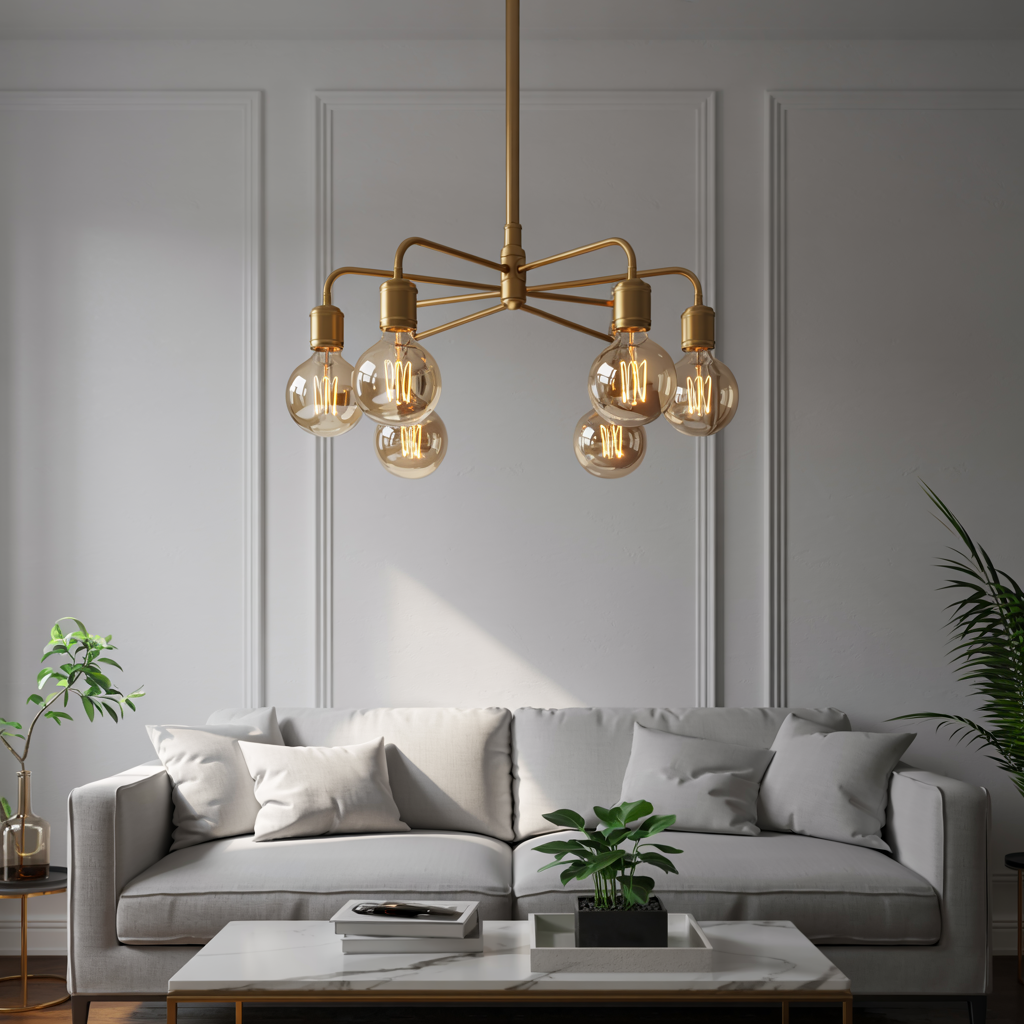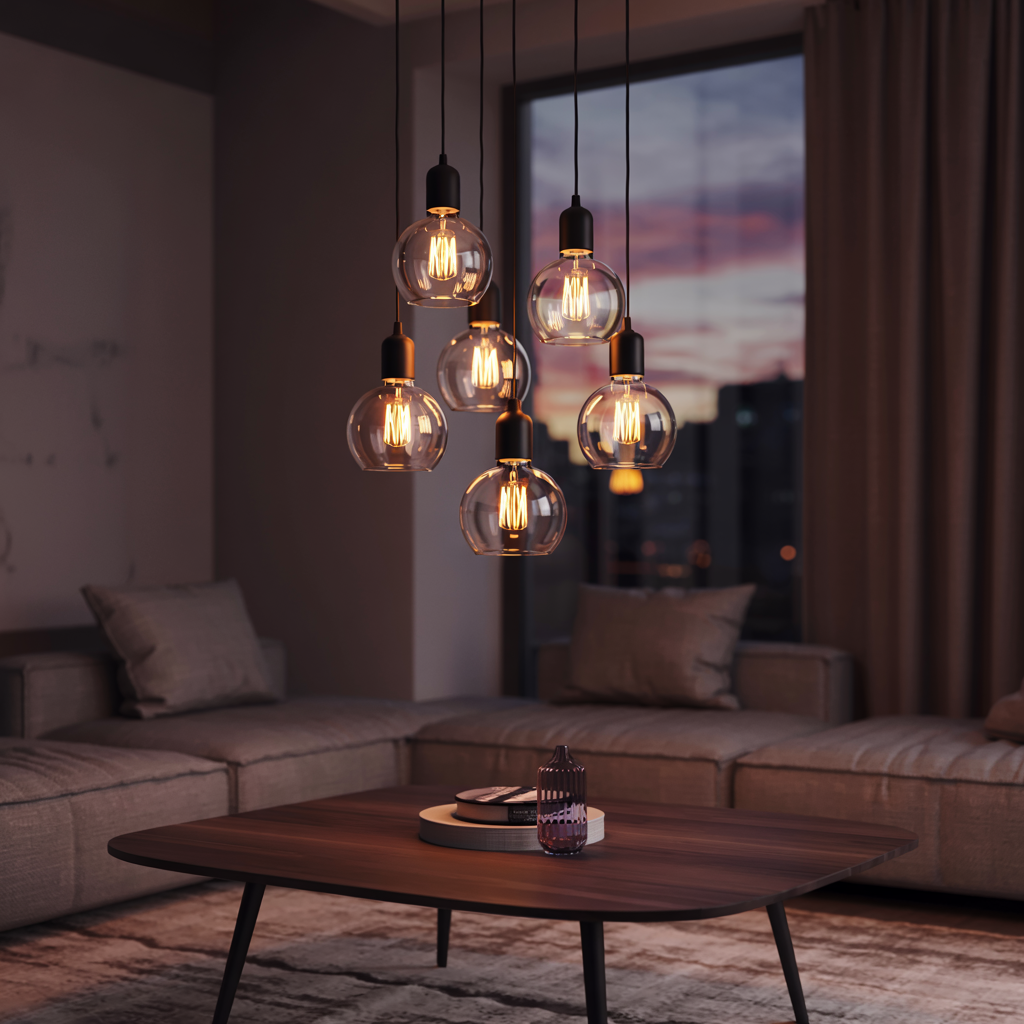Can Light Placement in Living Room: Transforming Your Space With Strategic Placement
Transforming your living room from drab to fab isn’t just about furniture and décor; it’s about the light! The strategic placement of lighting can dramatically alter the ambiance, functionality, and overall feel of your space. This comprehensive guide explores the art and science of can light placement in living room, helping you design a room…
Transforming your living room from drab to fab isn’t just about furniture and décor; it’s about the light! The strategic placement of lighting can dramatically alter the ambiance, functionality, and overall feel of your space. This comprehensive guide explores the art and science of can light placement in living room, helping you design a room that is both stylish and perfectly illuminated. You’ll learn about different lighting types, their best uses, and how to create various moods and highlight architectural features. Let’s dive into the world of illuminating your living room!
Living room lighting design isn’t just about choosing pretty fixtures; it’s a holistic approach to illuminating your space using a variety of light sources to create different atmospheres and highlight specific features. It’s about layering light to achieve depth and
visual interest. This involves considering the size of the room, its color scheme, the furniture arrangement, and the overall mood you want to achieve.
Can Light Placement in Living Room (Where Should You Place)
Why is Proper Light Placement Important?
Proper light placement significantly impacts the functionality and aesthetic appeal of your living room. Poor lighting can make a room feel cramped, dull, and uninviting. Effective lighting, on the other hand, can create a warm, inviting atmosphere, highlight architectural details, enhance the appearance of artwork, and improve overall comfort and visibility.
Key Features of Effective Can Living Room Lighting

Effective living room lighting usually incorporates three key elements: ambient, task, and accent lighting. Ambient lighting provides overall illumination; task lighting focuses on specific areas for activities like reading or working; and accent lighting highlights specific features or artwork.
Read More: Lighting Your Home: How Many Lumens To Light A Room?
Types of Living Room Lighting
Ambient Lighting: Setting the Mood
Ambient lighting provides general illumination, creating the overall mood of the room. This is often achieved with ceiling fixtures, such as chandeliers, recessed lights, or flush mounts. The choice depends on the room’s size and style. A large, high-ceilinged room might benefit from a statement chandelier, while a smaller room might prefer a more understated flush mount.
Task Lighting: Functionality in Focus
Task lighting focuses light on specific areas where tasks are performed. This could include floor lamps next to reading chairs, desk lamps for working, or pendants above a kitchen area within the living room. Consider the intensity and directionality of the light required for the task.
Accent Lighting: Showcasing Your Style
Accent lighting highlights architectural features, artwork, or decorative objects. This could involve track lighting, picture lights, or strategically placed spotlights. Accent lighting adds depth and visual interest to the room, drawing attention to cherished possessions and design elements.
Planning Your Living Room Can Lighting Scheme

Assessing Your Living Room’s Needs
Before you begin, assess your living room’s dimensions, ceiling height, and existing architectural features. Note where natural light enters the room and how it affects different areas. Consider the functions of the room – is it primarily for relaxing, entertaining, or both?
Choosing the Right Light Fixtures
The type of light fixture you choose significantly influences the lighting style and ambiance. Consider factors such as style, material, size, and wattage. Mix and match different fixtures to create a layered look, combining styles and materials to complement your existing décor.
Understanding Light Color Temperature
Light color temperature is measured in Kelvin (K). Lower Kelvin values (2700K-3000K) produce warmer, more yellowish light, ideal for creating a cozy atmosphere. Higher Kelvin values (5000K-6500K) produce cooler, bluish light, often preferred for task lighting.
Read More: 10 Brilliant Drop Ceiling Lighting Ideas to Brighten Up Any Room
Creating Different Moods with Lighting
Relaxing and Intimate Ambiance
For a relaxing atmosphere, opt for warm-toned lighting with lower Kelvin values. Dimmable lights allow you to adjust the intensity, creating a cozy and intimate setting perfect for evenings spent reading or watching television.
Energetic and Vibrant Atmosphere
For a more energetic and vibrant atmosphere, consider brighter lighting with higher Kelvin values. This can be achieved with a combination of ambient and task lighting, making the space feel open and lively, suitable for entertaining.
Layering Light for Depth and Dimension
Combining Ambient, Task, and Accent Lighting
Layering light involves combining different types of lighting to create depth and dimension. This ensures that the room is well-lit for various activities while also highlighting key features and adding visual interest. Avoid relying solely on a single light source.
Using Dimmers for Versatility
Dimmers offer incredible versatility, allowing you to adjust the intensity of your lighting to suit different moods and activities. This is crucial for creating the perfect atmosphere, whether you’re hosting a party or enjoying a quiet evening at home.
Common Mistakes to Avoid
Over-reliance on Overhead Lighting
Relying solely on overhead lighting often results in harsh, flat illumination that lacks depth and warmth. Incorporate task and accent lighting to create a more balanced and visually appealing atmosphere.
Ignoring Natural Light
Natural light is a valuable asset. Consider window placement and optimize your artificial lighting to complement rather than compete with natural light. Use sheer curtains or blinds to control the amount of natural light entering the room.
Neglecting the Color of Walls and Furniture
The color of your walls and furniture influences how light reflects and diffuses throughout the room. Darker colors absorb light, making the room feel smaller and darker, while lighter colors reflect light, brightening the space.
Tips for Choosing Light Fixtures
Considering Your Living Room’s Style
Choose light fixtures that complement your living room’s overall style. A modern living room might benefit from sleek, minimalist fixtures, while a traditional living room might prefer more ornate chandeliers or sconces.
Matching Light Fixture Styles
While mixing styles can create visual interest, ensure some consistency to maintain a cohesive look. Choose light fixtures with similar finishes or design elements to create harmony throughout the room.
Understanding Light Bulb Types
Different light bulb types produce different light qualities. LED bulbs are energy-efficient and long-lasting, while incandescent bulbs offer a warmer, more traditional feel. Consider the color temperature and energy efficiency when making your selection.
Setting up Your Living Room Lighting
Step-by-Step Guide to Installation
Always prioritize safety. If you are unsure about electrical work, consult a qualified electrician. For simple fixtures, follow the manufacturer’s instructions carefully. Ensure proper wiring and secure connections.
Positioning for Optimal Illumination
Strategically place your light fixtures to maximize their impact. Consider the placement of furniture and how light will fall on different areas of the room. Experiment with different arrangements to find the optimal setup.
Living Room Lighting: Comparisons and Considerations
Comparing Different Lighting Styles
Different lighting styles, such as minimalist, traditional, or bohemian, will influence your choice of fixtures and overall design. Research different styles and choose the one that best complements your personal taste and living room décor.
Comparing Costs and Energy Efficiency
LED lights are significantly more energy-efficient than incandescent or halogen bulbs, resulting in long-term cost savings. Factor in the initial cost of fixtures and bulbs along with their ongoing energy consumption.
Frequently Asked Questions
What is the ideal number of light sources for a living room?
There’s no magic number, but layering light sources is crucial. Aim for a mix of ambient, task, and accent lighting, adjusting the number based on room size and functionality. A small living room might need fewer sources than a large, open-plan space.
How can I improve the lighting in a dark living room?
Maximize natural light by keeping windows unobstructed. Use light-colored walls and furniture to reflect light. Strategically place mirrors to bounce light around the room. Opt for brighter light bulbs (higher Kelvin values) and incorporate multiple light sources.
How do I choose the right light bulb color temperature for my living room?
Warmer color temperatures (2700K-3000K) create a cozy, inviting atmosphere, ideal for relaxation. Cooler temperatures (5000K-6500K) are better suited for task lighting or areas where you need bright, clear illumination.
Can I use smart bulbs in my living room?
Absolutely! Smart bulbs offer advanced features like dimming, color changing, and voice control, enhancing convenience and customization. They integrate seamlessly with various smart home systems, allowing you to control your lighting remotely or via voice commands.
Final Thoughts
Mastering living room light placement is a journey of experimentation and refinement. It’s about understanding your room’s unique characteristics and using lighting strategically to enhance its beauty and functionality. By combining ambient, task, and accent lighting, you can create a versatile space that effortlessly shifts from a relaxing retreat to a vibrant entertaining hub. Don’t underestimate the power of lighting – it’s the key ingredient to transforming your living room into a space that truly reflects your personality and lifestyle. Now that you’re armed with this knowledge, embark on your lighting adventure! Choose your fixtures, experiment with placements, and enjoy the dramatic transformation that strategic lighting can bring to your living room. Let the light shine!

